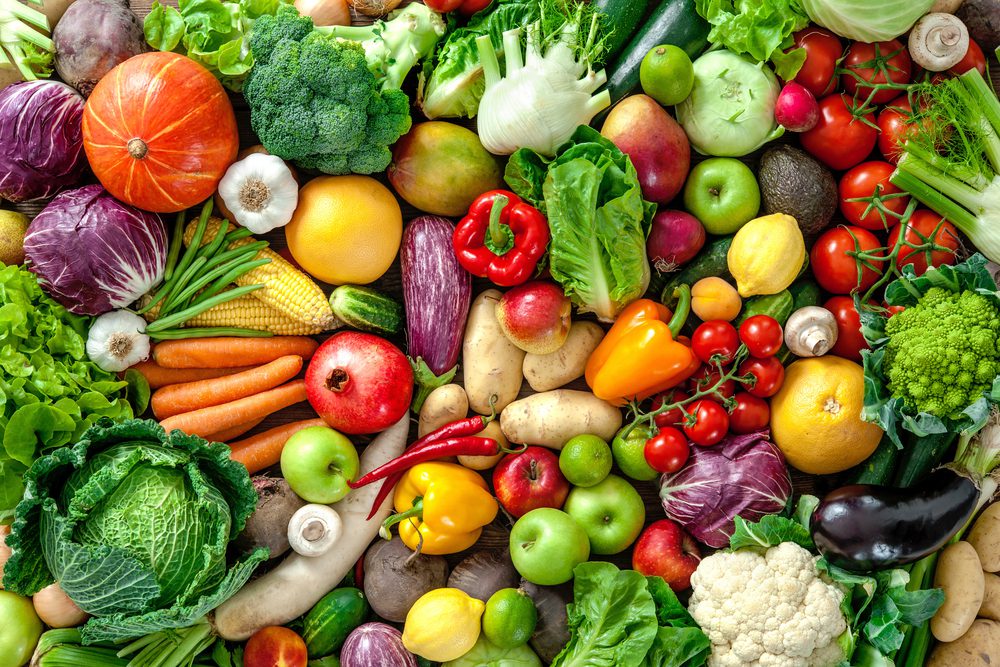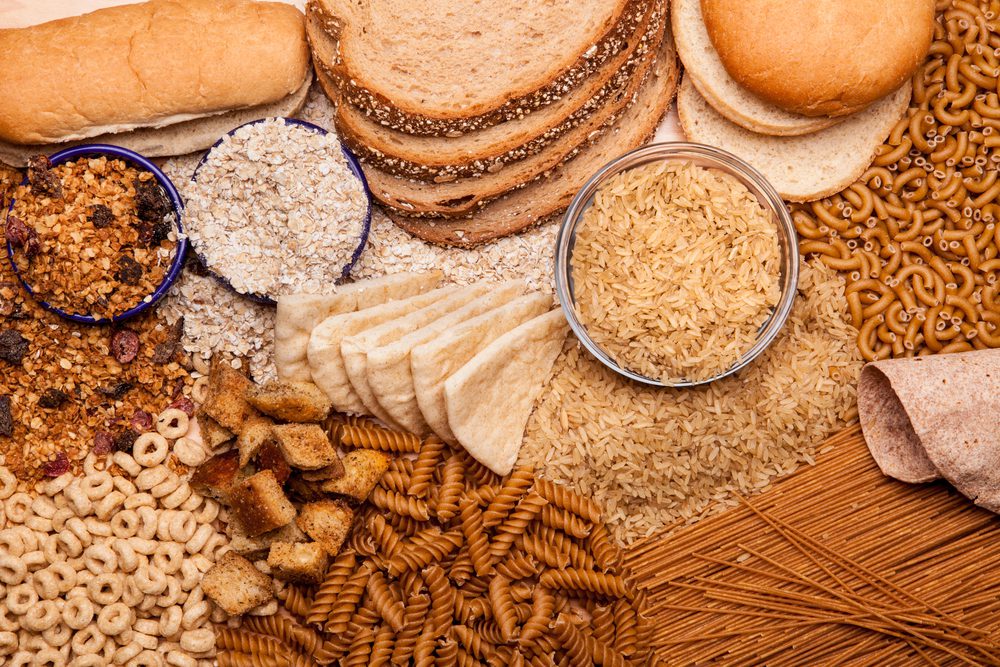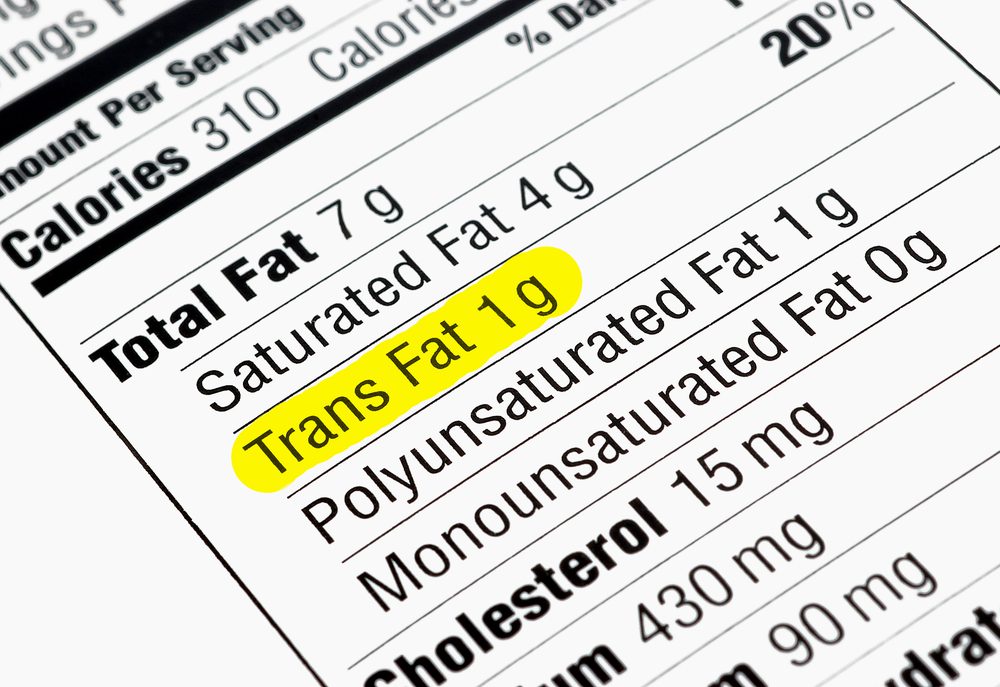Has the food industry been telling lie after lie all these years?
The first thing I thought when I stumbled upon this information was: I don’t think the food industry can still lie to us.
I mean, we live in the digital era where information travels at the speed of light; if somebody – especially a food brand – would lie to us, we would find out instantly. Then we also have the Food and Drug Administration with its extremely strict rules for food labeling and ingredients; they wouldn’t let us eat toxic meals, right?
As with many other things in life, that’s just the theory. In real life, we’re still eating plenty of extremely unhealthy foods that damage our bodies beyond repair – and I’m not just talking about fast food here.
Did you know that grass-fed beef doesn’t come from cows that eat just grass? Or that organic products aren’t any more nutritious than regular ones? I feel like it’s time to put an end to these popular myths (and more) that just take money out of our pockets unnecessarily.
Today, we’ll see the top 12 most toxic lies the food industry has been telling us for way too long.

No.1: ‘Natural’ foods are healthy
Over the past few years, the FDA has been imposing strict restrictions on many terms food manufacturers use to attract clients. Nowadays, words like ‘gluten-free’ can’t be used by everybody, which definitely keeps us healthier!
However, the FDA still hasn’t regulated the word ‘natural.’ This means that any manufacturer can use it for their marketing strategy regardless if their product is indeed healthy or not.
Unfortunately, this practice has already harmed many people. Reports indicate that more than 300 customers filed lawsuits for being tricked into thinking a certain product is ‘natural.’
The FDA has currently regulated the word ‘natural’ for egg, meat, and poultry products. However, it only means that such foods have been ‘minimally processed’ but they can still contain antibiotics or other harmful substances.
No.2: Low-sugar or zero-sugar foods are better
During the past decade, we’ve become very aware of a painful truth: sugar can seriously damage our health. One of the main consequences was that we started refusing products like candy, soda, or cake because they were insanely high in sugar. This behavior opened a new door for food manufacturers: low-sugar or zero-sugar foods.
According to the American Heart Association, a food labeled as ‘sugar-free’ can contain up to 0.5 grams of sugar. Things are even worse for terms like ‘no added sugar’ or ‘without added sugar’ which only means that the final product doesn’t contain any additional sugar-containing ingredients.
These terms rarely mean that a product truly has no sugar at all. Furthermore, those foods that are indeed lower in sugar usually contain artificial flavors and taste enhancers to help them remain tasty and addictive.
A 2015 study revealed that most people think that products labeled with the word ‘fruit’ are healthier than their alternatives. Unfortunately, many of these items also have plenty of added fructose sweetener or juice concentrates that make them just as sugary as their competitors.
No.3: Grass-fed cows eat only grass all their lives
We must admit: the meat industry has evolved a lot in recent years. Now we can find hormone-free, antibiotic-free, cage-free or grass-fed products on the market, which means they come from animals who had been living a healthy life.
Products with such labels are also considerably more expensive than their alternatives, which also makes you think they’re much healthier. But are they really?
Healthline reports found that grass-fed beef indeed contains more omega-3 fatty acids and nutrients than its alternatives. Up until 2016, the Agricultural Marketing Service had a strict definition for the word ‘grass-fed:’ the beef must have come from cows that were only fed grass and had ‘continuous access to pasture during the growing season.’
Now there are basically no rules as to how manufacturers can use the word. This means that some of that ’grass-fed’ beef actually comes from cows that have also been fed grains. Your best bet is to purchase beef labeled as ‘grass-finished.’
No.4: Low-calorie foods are healthier
Data from the U.S. Dietary Guidelines have repeatedly found that our country is eating way more calories than the daily recommended intake. What’s worse, most of those calories aren’t even healthy as they contain sugar, unhealthy fats, and very few nutrients.
These scary statistics made us turn to foods and products labeled as ‘low-calorie.’ After all, if we’re eating too many calories, these sound like the best option, right?
Wrong – at least when it comes to snacks, soda, and other heavily processed foods. The main reason is that most low-calorie products are enriched with artificial sweeteners to give you satisfaction similar to actual sugar. However, these are still empty calories that lack any nutritional value; it also proves that just because something is low in calories, it doesn’t mean it’s healthy too.
This 2017 study from the Canadian Medical Association Journal, for example, found that eating non-nutritive sweeteners constantly can increase your risk of obesity, type 2 diabetes, and hypertension. You can find these sweeteners listed on the label as stevia, sucralose, or aspartame.

No.5: All whole-grain foods are healthy
Recently, more and more people have become aware of the health benefits of whole grains. These unprocessed cereals are loaded with nutrients. Multiple studies have proven that consuming foods made with whole grains can reduce your risk of type 2 diabetes and heart disease.
The problem?
According to the Whole Grains Council, a product can be labeled as ‘whole grain’ if it has 51% whole grain or more. This means that the other 49% of the ingredients used can be refined grains or other unhealthy, heavily processed substances. This is one of the few lies on our list so many people believe. In fact, a study from 2011 concluded that most parents believe that a product labeled as ‘whole grain’ is much healthier than alternatives. What’s worse, these foods usually contain more sodium or sugar than their whole grain-free competitors.
No.6: Organic food contains only organic ingredients
Organic, sugar-free, low-fat, low-calorie – these are all terms we as consumers love and food marketers definitely know their power. The word ‘organic’ instantly makes us think that food is healthy, clean, and nutritious.
Manufacturers have to be certified organic by the United States Department of Agriculture (USDA) so they can use the word ‘organic’ on their product labels.
However, this doesn’t mean that the entire product is organic! Unless you choose foods that clearly say they’re 100% organic, chances are you’re still eating some artificial ingredients along with the organic parts of your meal. For example, the USDA says that foods labeled as ‘made with organic ingredients’ actually have 70% organic ingredients.
No.7: Organic foods are healthier
So now we know that some products aren’t entirely organic. But are organic foods really as healthy as we think?
According to this 2012 study from Stanford, organic products might be free from harmful pesticides (or contain less than their alternatives). However, aside from phosphorus, researchers didn’t find any nutrient that would be higher in organic foods compared to their non-organic competitors.
The team of researchers still concluded the study by encouraging consumers to turn to organic products due to their authentic flavor as well as the fact that they’re environmentally friendly. However, this doesn’t mean you’re free to eat as many organic sweets as you like because the negative impact will be very similar to regular sweet treats.
No.8: High-protein foods are healthy
Protein is known as the building block of life for good reason: this macronutrient helps us build muscle and stay healthy in the long run. Protein-rich foods also promote satiety in a healthy way, so you can lose weight or prevent unhealthy cravings.
Some of the top natural sources of protein are eggs, fish, lean meats, or plant-based foods such as quinoa, broccoli, almonds, and oats. If you want to increase your protein intake through store-bought products, though, it might not be the wisest choice. Yes, there are hundreds of products high in protein: bars, powders, beverages, and snacks. But most of them are also very unhealthy.
This 2018 study conducted by the Clean Label Project looked into 130 of the most popular protein supplements; sadly, more than 75% of powders had concerning levels of lead and cadmium, two substances that can damage your kidneys and brain.

No.9: ‘Trans-fat free’ means zero trans fat
Foods nowadays contain three types of fat:
- Monosaturated fats: the good guys you want to eat
- Saturated fats: included in many foods, but can be harmful in the long run
- Trans fats: the bad guys you should always avoid
Why are trans fats so bad? Aside from increasing your long-term risk of clogged arteries, heart problems, and cancers, these fats also give you unwanted pounds without any real nutritional value.
According to the American Heart Association, several dairy and meat products are naturally rich in trans fats; however, these fats are most often included in deep-fried foods, ready-made meals, and fast food. Now, if a label says ‘trans fat-free’ it shouldn’t have any trans fats, right?
Nope. The Food and Drug Administration (FDA) actually allows manufacturers to use up to 0.5 grams of trans fats in their products and they can still label them as ‘trans fat-free.’ If you see the word ‘hydrogenated’ on the label, your product still contains trans fats and you’re being tricked.
No.10: Non-GMO foods aren’t genetically modified
As the food industry has been evolving, manufacturers figured out more and more ways to change and improve the texture, flavor, or look of our favorite foods. One of the main ways they do that is by genetically modifying food.
And the harsh truth is that almost every food around us is genetically modified. Nowadays, finding food that’s even remotely similar to what our ancestors ate is nearly impossible. Let’s take apples: in the original version, this fruit was small, tart, and sour. Scientists cross-bred apple trees to make them large, juicy, and sweet. Another popular technique is mutation breeding: food researchers take the best treats from a plant that produces food and apply gamma radiation to it to speed up the genetic mutation process.
Both of these practices have been used for decades and none of them is considered GMO to this day, Forbes says.
No.11: Omega-3 supplements are magical
We’ve already talked about how some fats are healthier than others. Some foods like fish are naturally rich in omega-3 fatty acids, which is particularly beneficial for heart health, immunity, and digestion.
Another great type of fat is alpha-linolenic acid, naturally found in flaxseed, nuts, leafy greens, and most vegetable oils. However, meeting your daily requirements through such foods may be hard or impossible especially if you’re also allergic or intolerant to such foods. The food industry saw the problem and started providing solutions.
According to Harvard Health, more than 10% of adults in our country take omega-3 supplements regularly. Our fascination with omega-3 fatty acids as consumers also made manufacturers fortify common foods with this nutrient; now you can find juice, cereal, and even salad dressing with added omega-3.
However, this 2018 study proved that omega-3 supplements aren’t nearly as effective at preventing heart disease as eating foods naturally rich in this ingredient. Another study that you can find here looked into the real benefits of omega-3 supplementations in terms of cardiovascular health. Although these supplements have reduced heart attack risks by almost 30% in patients diagnosed with a high risk of heart disease, they didn’t really reduce the long-term risks of other health problems.
In short, these products aren’t nearly as magical or revolutionary as they’re advertised to be.
No.12: ‘Personal size’ foods contain a single serving
As customers, we always love seeing how thoughtful food manufacturers are towards us. Reading things like ‘personal size’ written on the label has that effect, as it makes us feel like that product was made for us.
Does it seem special? Yes. Is it accurate? Most of the time, no.
The term ‘personal size’ makes us think that the product is made for a single person, which is us, the buyer. However, most packages labeled this way actually have two servings or even more. The issue has been studied by Men’s Health in 2012: a microwaveable soup that was obviously designed for a single person actually had two serving sizes. The same goes for many granola bars which make you think they’re for one when they actually pack two servings or more.
This means that you’re eating twice the sugars, sodium, and calories listed on the label and therefore more than your body really needs. No matter how much we’d like to trust food labels and advertisements, the truth is only if we stay informed we can figure out which foods are truly beneficial. I know it may seem difficult especially since everyone seems to have a ‘specialized’ opinion on what we should or shouldn’t eat, or what’s the perfect diet to keep us healthy in the long run.
Unfortunately, the food industry is now more deceiving than ever in terms of ingredients, flavors, and even labels.
Make sure you are eating as healthy as possible, by introducing these fruits and vegetables to your diet! P.S.: They also kill harmful bacteria and viruses!













